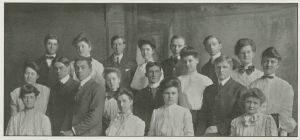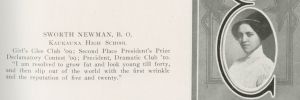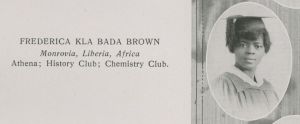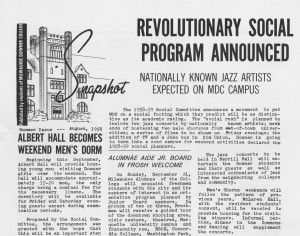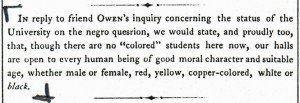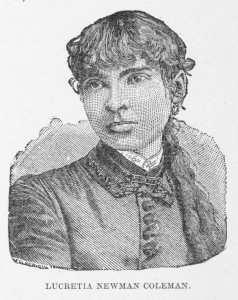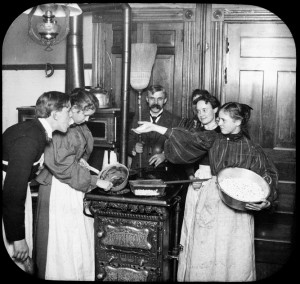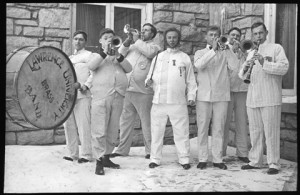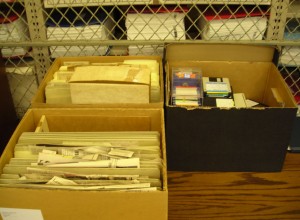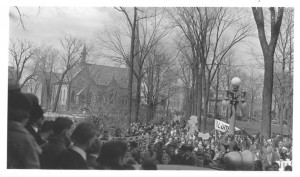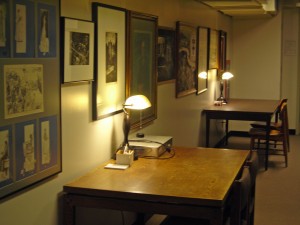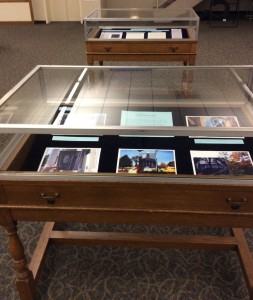 Two new displays by Archives student assistants are on view in the front entrance to the Library: “Rephotography” by Emma Lipkin ’19, and “‘Occupy Lawrence’ (1972): Black Students and White Allies Take a Stand Against Institutional Racism” by colby lewis ’17. Using different means and to different ends, both displays explore a theme of Lawrence “then and now” – how much has changed at Lawrence and how much has stayed the same over time?
Two new displays by Archives student assistants are on view in the front entrance to the Library: “Rephotography” by Emma Lipkin ’19, and “‘Occupy Lawrence’ (1972): Black Students and White Allies Take a Stand Against Institutional Racism” by colby lewis ’17. Using different means and to different ends, both displays explore a theme of Lawrence “then and now” – how much has changed at Lawrence and how much has stayed the same over time?
“Rephotography” examines our physical space through photographs, both archival and newly captured. Emma re-photographed areas of campus with photographs from the Archives in the foreground. Buildings featured include Ormsby, Colman, and the Chapel.
“‘Occupy Lawrence’ (1972)” features Lawrentian articles and other records documenting a protest led by the Association of Afro-Americans in 1972. Students experiencing injustice and discrimination demanded change from Lawrence’s administration. The display raises the question: “How far have we come?”
